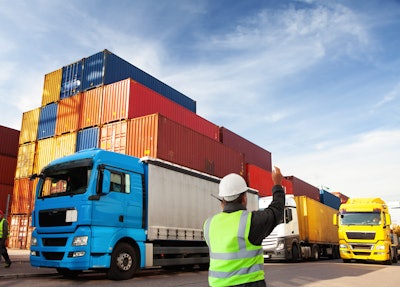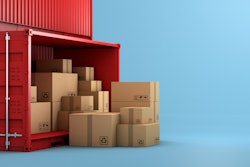
Container prices in China are experiencing significant volatility, with rates changing rapidly within just a few days. The average container prices in China have already reached around $2,500-2,700 (40-foot-high cube, cargo-worthy containers) as a result of rising complications resulting from the geopolitical tensions and uncertainties, according to data from Container xChange.
In fact, analysis from Container xChange’s trading and leasing platform showed that the container trading and leasing prices continue to rise Ex China to Europe and to the United States in April. It also points that the volatility in container prices is more evident since the beginning of this year through April as compared to last year.
“Despite the recent price hikes, we're observing a market that is not yet fully tight. Containers are still available, depots are not operating at full capacity, and while prices are increasing, it's not at the rapid rate we saw during the post-COVID demand pent-up period. The situation is improving for stakeholders, but not significantly. Demand prospects remain subdued, and the price hikes are primarily driven by uncertainty rather than purely by demand. This market condition requires stakeholders to remain vigilant and informed of current market currents, invest in cost optimisation strategies and develop algorithms for demand and supply forecasting,” says Christian Roeloffs, co-founder and CEO of Container xChange.
Key takeaways:
- Container xChange surveyed depot owners to assess their capacity utilization since the Houthi attacks in the Red Sea. The majority reported operating below full capacity, particularly in China, indicating that depots there are not facing significant pressure from container inventory. In contrast, depots in the United States and Europe reported higher utilization rates.
- Despite depots not facing significant pressure from container inventory, there remains a question of where the pressure lies in soaking up the excess containers in the market.
- Another key finding from the survey reveals that depot owners reported increased costs in two major heads since the beginning of the Houthi attacks – equipment usage fees and storage space rentals. Other overheads that have witnessed cost increases over the past five months include administrative fees, container handling charges, daily and monthly storage fees, demurrage fees, and security and surcharge fees.
- Ports such as Ningbo, Qingdao, Shanghai, and Busan experienced price increases over the 11-month period (June 2023 to April 2024). Ports like Antwerp and Rotterdam saw relatively stable prices, with minor fluctuations observed. While Singapore experienced moderate fluctuations, average container prices overall showed a slight decrease. The increase in prices in Northeast Asia suggests a robust market for transshipment services, driven by factors such as regional trade dynamics and economic growth.
“As geopolitical tensions continue to escalate, economies are strategically adding stops to their cargo routes to mitigate risks and ensure the smooth flow of goods. The importance of transshipment hubs is becoming increasingly evident, as they play a crucial role in facilitating these complex supply chains. This shift emphasizes the need for flexibility and strategic planning in global trade, as businesses navigate a rapidly changing environment,” adds Roeloffs.


















![Pros To Know 2026 [color]](https://img.sdcexec.com/mindful/acbm/workspaces/default/uploads/2025/08/prostoknow-2026-color.mduFvhpgMk.png?ar=16%3A9&auto=format%2Ccompress&bg=fff&fill-color=fff&fit=fill&h=135&q=70&w=240)